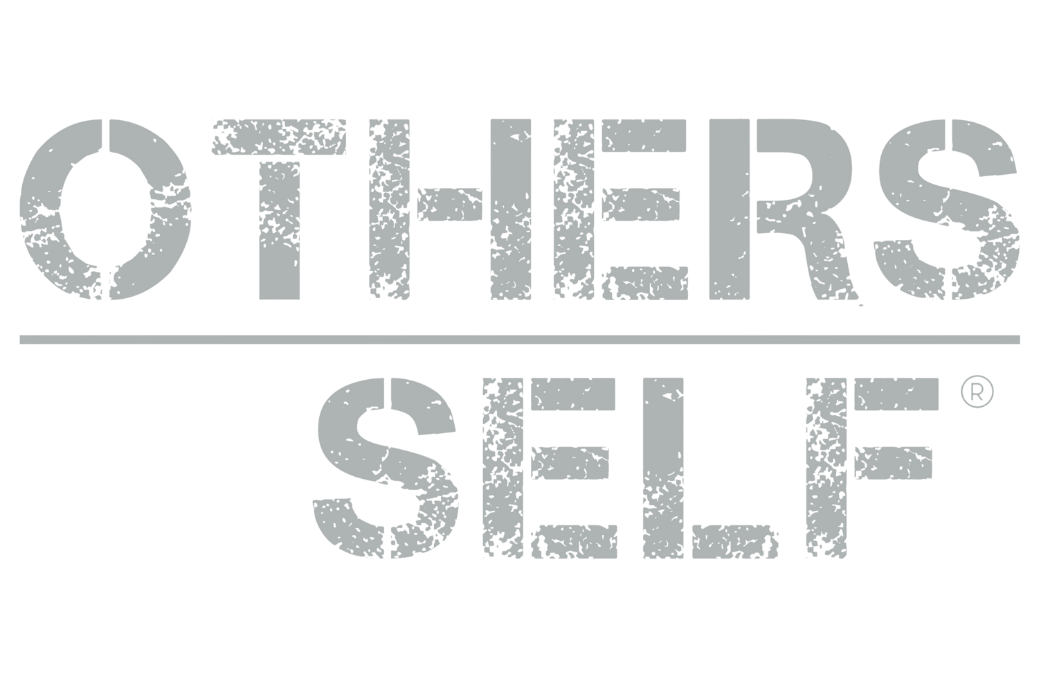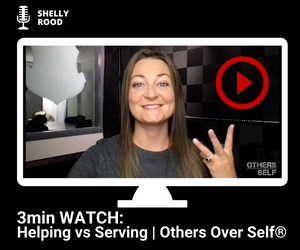Boundaries serve us all by guiding our daily actions. When boundaries are missing or are not being respected, it can feel like things in life just aren’t falling into place.
When this happens, it might be time to review our existing boundaries, and even set some new ones.
When focusing on boundaries, it’s important to understand why they’re needed in the first place. Also, it’s just as important to know how to set them effectively.
By reading this article, you’ll gain two key skills:
- Engaging in the 3-step process of setting boundaries, and
- Being able to identify the three different types of boundaries.
Ready to improve your life? Let’s go!
Yes – boundaries guide our own actions, and they also make an impact on those around us.

Setting Boundaries: Recognizing the Need
A few Saturdays ago, I received a text message around 7am. It came from an unsaved number. Once my tired eyes were clear enough to read, I realized that the sender was a business contact that I had just met. My immediate thought was, Why in the world does this woman think it’s okay to text me right now?
“Daring to set boundaries is about having the courage to love ourselves even when we risk disappointing others.”
Brene Brown
Up until that point, she and I had only met once, and emailed a handful of times. I didn’t know this lady from Eve. So, when my peaceful Saturday was interrupted by an early morning “ding,” I went into protector-mode and felt that I no longer wanted to be connected with her.
Too harsh? Perhaps. But I have a boundary, and she overstepped it without even knowing.
Boundaries: They’re all Around us, and Different for Everyone

Years ago, I didn’t care so much about the timing of a text message. In fact, I even welcomed the middle of the night phone calls during military duty. Now, though, I’m in charge of my own schedule and I share a home with three males: a husband, a preteen and a two-year-old. Moments of silence are worth more than gold, and this makes early mornings precious.
This particular person clearly didn’t know me well enough to pass accurate judgement on how I would feel in that moment. Or, she didn’t care. Yet it brings up a good point: If someone doesn’t know you personally, how can they know your personal boundaries?
It’s About Mitigating Risk

During my time in the Army, we wrote Risk Assessments for everything… and rightfully so. From rappelling off a 40-foot cliff to chucking live hand grenades in the dark, we did some CRAZY risky stuff!
If you’re into cool military stories, I recommend checking out our Military Culture section here on the blog.
A Risk Assessment is a tool used by both military and civilian personnel that helps leaders make decisions. Most veterans I know share this train of thought: “It isn’t CAN we do it, but SHOULD we do it.”
Don’t worry- we aren’t learning how to conduct a full Risk Assessment here, but it’s important to know two critical parts of the process: 1. Identifying hazards (risks), and 2. Implementing controls to mitigate them.
Examples of Mitigating Physical Risk
Risk: falling while rappelling could cause a head injury
Mitigation: wear a helmet
Risk: the explosion of grenades are loud and may damage hearing
Mitigation: require ear protection
Examples of Mitigating Emotional Risk
Risk: a previous bad experience with rappelling could affect someone’s performance
Mitigation: have participants disclose climbing background
Risk: loud noises triggering underlying mental heath issues (such as Post Traumatic Stress Disorder)
Mitigation: have medical professionals on standby
See how this works?
Nearly every moment of our lives involves interacting with others – and this is risky business
Moments in everyday life can be just as risky as military operations. In fact, they can even be more risky, because there are so many factors out of our control. From riding a crowded subway to dating someone new, we constantly interact with others and put ourselves in situations involving risk.
Why? Because people come with boundaries, whether you like it or not.
The good news is that you have the power to set your own boundaries – this is your Risk Assessment tool for everyday life.
Let’s get started.
The 3-Step Process of Setting Boundaries
- Recognize
- Educate
- Review & Revise
Setting Boundaries: Step 1. Recognize
Boundaries are everywhere, and they differ person to person. Start by understanding what boundaries are already in place. Then, consider if those boundaries are being respected.

How will you know if a boundary is missing, or is possibly being crossed? Here are some signs to look for:
- feeling resentment
- a quickening of the heartbeat
- the urge to get away, or
- feeling stuck; unable to move
- a burst of frustration or anger
- the situation just doesn’t sit right
- feeling your stomach “drop”
If you find yourself struggling to see what boundaries are in place, putting pen to paper is a great way to gain clarity. Set a timer for ten minutes and use this as a journal prompt:
“When ____ happened, I felt ____. The first person involved was ____. He/she crossed a boundary because ____. One reason he/she may have felt it was okay to cross this boundary is ____.”
Continue writing to include the second person involved, and so on.

Setting Boundaries: Step 2. Educate
Boundaries do not exist for you and you alone – they always involve other people.
If you set a boundary, it becomes your responsibility to educate others on this expectation.
I say again, if YOU set a boundary, it becomes YOUR responsibility to educate others on this expectation.
How often do you feel offended, or wronged, by the people around you?
While it’s true that some offense occurs naturally in all human interaction, don’t forget that we do have some control over our participation in many interactions. Feeling sad, hurt or disappointed may be due to a lack of educating others on your boundaries. Note: this point of view does not apply to situations of abuse (see the final section of this article).
Why do we need to educate others on our boundaries? Well, we tend to assume that we are ethically and morally aligned with the people around us, but this rarely is the case. Consider that even within formal establishments of shared belief systems (such the military or a religion) people’s values differ.
Even the law is a collection of boundaries that society decides should not be crossed. Does this mean that no one ever breaks the law?
If someone doesn’t know you personally, how can they know your personal boundaries?
Now, let’s think back to the question we pondered earlier: If someone doesn’t know you personally, how can they know your personal boundaries? As healthy adults, it is our individual responsibility to set our own boundaries and then educate others on them.
How did I handle the Saturday 7am text message from a relative stranger?
I waited until 9am and then emailed the answer to the question that she sent via text. In my response, I intentionally crafted 1) the timing of the reply (indicating normal work hours), and 2) the method of the reply (choosing to forego the text option and stick to email).
Another option would have been to address the issue directly. I could have started a text reply with, “Good to hear from you, my workday typically starts at 9am…” This option indicates 1) hours for texting, and 2) a desire to continue texting with this person.

Setting Boundaries: Step 3. Review & Revise
Now that we have worked through both Step 1: recognizing boundaries already in place, and Step 2: educating others on their existence, it’s time for Step 3: reviewing and revising our existing boundaries.
An easy way to do this is to categorize our existing boundaries into types, and then see how well they’re working together.
3 Types of Boundaries
- Windows
- Walkways
- Walls
These are three different types of boundaries that help us to manage situations. As you’ll see in the examples below, they can be literal or figurative.

Boundary Type 1: Windows
A window is a measure put in place to mark a need for physical distancing. This is a great place to start when thinking about setting boundaries because it allows for monitored interaction. Think about the physical windows in your home and the purpose they serve:
Windows can be opened and closed, allowing for a range of communication and entry options (are your windows open in the winter?).
Windows can be see-through or not, allowing for light and shadows to shine through without full details of what’s on the other side.
Windows can be flimsy or strong, allowing for reinforcement at times, such as the use of locks, alarms and iron bars.
Here are a few examples of Window boundaries:
- the plexiglass at the checkout counter
- physically backing up from someone near you
- privacy settings on social media
- alert notifications on your mobile phone
- caller ID
Essentially, windows are the first thing we put in place when we recognize that a boundary is needed.

Boundary Type 2: Walkways
Walkways, on the other hand, are systems or processes that we put in place to manage situations. A walkway is a collection of different boundaries, regardless of the types.
Think of it as a series of boundaries designed to guide people through interactions from start to finish.
What Walkways Look Like
Here are a few examples of Walkway boundaries:
- at the zoo: the path you follow, signs of entry, posted rules, locked doors, iron bars around cages
- email: who has your address, what they use it for, data privacy rules, spam filters, notifications, how you access it
- sibling interaction: caller ID, response times to messages, notification of visits, social media interactions, going places together
While it may seem like hard work to develop and maintain walkways, don’t underestimate this one key benefit gained from using them: a sense of inner peace.
When a walkway is in place, we don’t have to think so hard about what the next step of a relationship is, or how to correct a situation. We simply guide them back onto our path.
don’t underestimate this one key benefit gained from using walkways: a sense of inner peace.
In our initial example (the 7am text message), the business contact was already on one of my walkways:
First, we met virtually via email. Then, we established the purpose of our relationship. The next steps down the path were: in-person meeting, a thank you email with a recap of our conversation, and a request for another meeting.
By sending that text message, she stepped off my walkway and into a locked area, making it my responsibility to guide her back onto my path of comfort.
Keep in mind that walkways need to be reviewed and revised on a regular basis.
Setting up and Managing Walkways
In an office setting, it is important to be legally compliant with our walkways. A good rule of thumb is completing annual reviews in the areas of customer relations, employee interactions, administrative processes, and so on.
If your personal life, annual reviews can look more like goal-setting discussions. If your goal is less stress, identify the source of tension and start crafting boundaries and a walkway around it.

Boundary Type 3. Walls
The last type of boundary we’re discussing is a wall.
Walls are definitive structures put in place to clearly mark a beginning and an end. When you hit a wall, it may feel like you have no where to go. It may also feel like a loss of power, because access must be granted before you can participate.
When it comes to boundaries, it’s important to make sure the people on your walkways know that your walls exist. Walls are your final stop measures, and they are always attached to consequences.
When someone breaches one of your walls, be prepared to address the situation head on.
What Walls Look Like
Here are a few examples of Wall boundaries:
- yelling
- paying bills late
- living separately
- being untruthful
- driving while under the influence
- calling past a certain time when it’s not an emergency
I became a single mom when my son was at the age of four. After a few years had passed, it was time to start seeking out an earthly father figure once again. Oh…boy. Let’s just say that the dating world, at any age, is filled with walls.
Is it okay if your future spouse smokes?
Engages in recreational drugs or alcohol?
Dates other people?
Is divorced?
Only you can set the limits of your relationships.
This conclude the lesson on Step 3 of Setting Boundaries: Review & Revise. Now, you should be able to easily categorize your existing boundaries into types, and then see how well they’re working together.

When Boundaries are Breached
Often times, we assume that once we educate others about our boundaries, they will act according to our desires. Sadly, this is rarely the case as people’s values greatly differ, as does one’s level of self control.
When a boundary is unintentionally crossed, it is time to educate.
When a boundary is deliberately breached, it is a moment of disrespect.
some people may never respect your boundaries.
It’s your responsibility to not only set your boundaries, but to be strong enough to hold others accountable to them. Remember how walls are always attached to consequences? If you fail to enforce your limits, then they may as well not exist.
Finally, be aware that some people may never respect your boundaries.
I have a close relative that struggles with substance use disorder. Even after multiple rounds of detox and rehab, she continues to consume alcohol daily. She oversteps boundaries on a regular basis, keeping me on my toes about what my own limits are.
You can’t have a healthy relationship with an unhealthy person.
Sometimes, I want to cut her out of my life forever.
In fact, we have gone years at a time without speaking.
Our relationship has been rocky for decades, yet I finally have a sense of inner peace over it. All I have to do is remember this piece of advice from a pastoral counselor: “You can’t have a healthy relationship with an unhealthy person.”
This statement gives me the strength needed to not only love her, but to love myself. And I love myself through the application (and management) of personal boundaries.

Boundaries and Abuse
One more note on using boundaries to guide interactions with others: some people will deliberately work to tear them down.
There are people out there who use sledgehammers to breach walls, regardless of the consequences. They’ll look at you and say, “Yeah, I did that. So what?”
Others still may use a hammer and chisel to pull down your walls, one inch at a time. This process is known as grooming.
Grooming is a manipulation tactic used by abusers to gain control.
It’s how a pedophile convinces a child to go along with sexual interaction.
It’s how a drug addict convinces you to drive to unsafe places because they have needs.
It’s how my now ex-husband convinced me to stay together, risking the safety of our child.
Grooming is a serious issue that can lead to abuse. If you feel that your boundaries are being regularly manipulated, we recommend seeking the guidance of a pastoral counselor or clinical therapist of shared values.
Be watchful of any attempts to tear down your walls, no matter how small.

Lesson Recap on Boundaries
You made it to the end. In this article, you learned the why and how around setting boundaries. You should feel good about your newfound sense of self control!
We reviewed the 3-Step Process of Setting Boundaries (Recognize, Educate, Review & Revise), as well as three types of boundaries (Windows, Walkways and Walls).
Remember that boundaries serve us all by guiding our daily actions. So the next time you feel that your limits are are missing, or, are not being respected, take the time to review your boundaries and even set some new ones.






